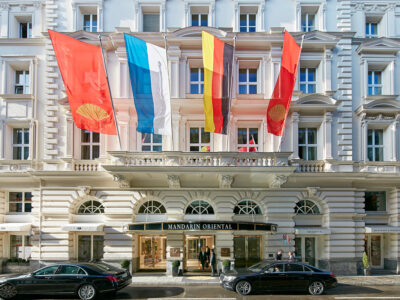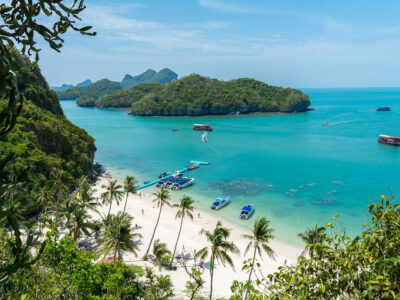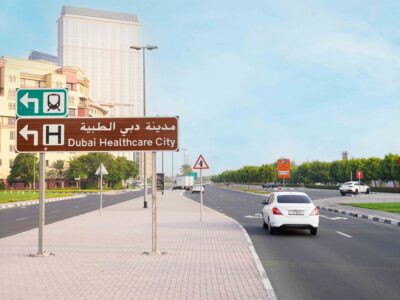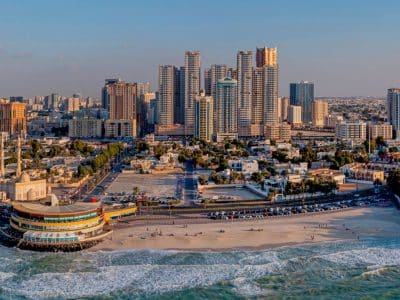Australia has failed to attract lucrative high-spend customers due to the lack of the top-end properties that appeal to this market, Tony Williams, vice president – resorts & projects at Emirates has claimed.
“I think Australia understands that the way it has driven its tourism has always been on volume. What it has never focused on is the quality and spend of the traveller,” he told
Arabian Travel News
.
“They went for [the] AU $25 (US $19.70) a day out [market] of Japan instead of sitting down and saying, ‘why do people come to Australia and what do they want to experience here?’”
He argued that the minute an exclusive property opened its doors in Australia it would be fully booked.
“And yet the mainstream Australian hotel developers and investors just don’t go there. They have done volume extremely well – probably better than anyone else – but Australia does not invest in the luxury market and nor does it make it easy for anyone else to do so,” he added.
Williams was speaking after Emirates Hotels & Resorts was finally given the go ahead to build Emirates Wolgan Valley Resort & Spa on a 3600-acre site in the Blue Mountains, a World Heritage site located two hours by car from Sydney.
The property, which when it opens early next year will be “without doubt, the most luxurious property in Australia”, according to Williams, will be situated at the junction of three national parks and will be based on the same principles as the award-winning Al Maha Desert Resort & Spa in Dubai, but adapted to blend in with Australia’s history, culture, heritage and landscape.
Individual suites – 37 double and two ‘Federation Suites’ – will be built with Australian architecture in mind in the homestead fashion, and boast views of the bushland and mountains.
Conservation-wise there are plans to create a feral-free zone whereby almost extinct or endangered native animal and plant species can be re-introduced and bred.
Other features will include a Timeless Spa, indoor and outdoor swimming pools, meeting and business facilities and breakaway rooms, while activities will span horse-riding, nocturnal wildlife drives, sunrise breakfast picnics and riverside and valley walks. Williams hopes that once the resort’s feralfree zone is up-and-running, the concept will be adopted by neighbouring private properties to create a feral-free valley.
He also wishes that after Wolgan Valley opens its doors and proves its worth, probably in February 2008, “20 more such projects will be built in Australia”.
“I want people to see that you can run a property and fund conservation work, but still be financially viable,” he said.
Williams revealed that Emirates Hotels & Resorts was already hunting for more sites on which to build similar high-end properties.
“We are looking in Queensland, Victoria and WA. We will open Wolgan Valley, and then do it all over again,” he said.
Bearing in mind it had taken18 months for the Australian authorities to give Wolgan Valley the green light and that five other hotel companies had given up their plans for similar luxury concepts due to bureaucratic barriers, Williams urged Australia’s federal and state governments and local councils to be more cooperative when future projects were put on the table.
“I am the first one to understand that the hotel industry has a shocking record, because most of the time hotel operators don’t care,” he said. “I think it’s fine to have these processes, but I don’t believe it’s always done in the most efficient manner.”
Visitor numbers to Australia have stagnated but spend-per-visitor has increased, according to a report recently published by Tourism Australia (TA).
In the year ending September 20, 2006, the country received 5,022,256 visitors aged 15 and above, representing no change to the same period in 2005, however, average spend per tourist hiked up 12% to AU $2665 (US $2095), the report revealed.
Around AU $18.9 billion (US $14.9 billion) was generated from direct tourism activity, representing a 7% hike on the previous year.
“Profit was more important than numbers as while numbers are a good indicator, the real issue in any business is what enables your business to grow,” said Minister for Small Business and Tourism, Fran Bailey. “You improve the bottom line by improving the yield you generate.”
However, opposition spokesman for Tourism Martin Ferguson, said the findings were alarming in that numbers from key markets such as Japan and New Zealand had plummeted.
A separate batch of TA figures focusing on the GCC markets found total Gulf arrivals increased 7% to 33,973 for the year ending September 20, 2006, with Saudi Arabia showing the biggest hike of 14% to 5494 visitors. However, the UAE contributed 19,146 visitors, up 8% on 2005.
All GCC visitors spend above the average, with Bahrainis splashing out AU $7378 (US $5801) per visit, Omanis, AU $4530 (US $3562), and Saudi Arabian nationals, AU $4346 (US $3417). UAE nationals spend the least per stay at AU $2857 (US $2246), although this figure tallies above the international average of AU $2665 (US $2095) per visitor.








